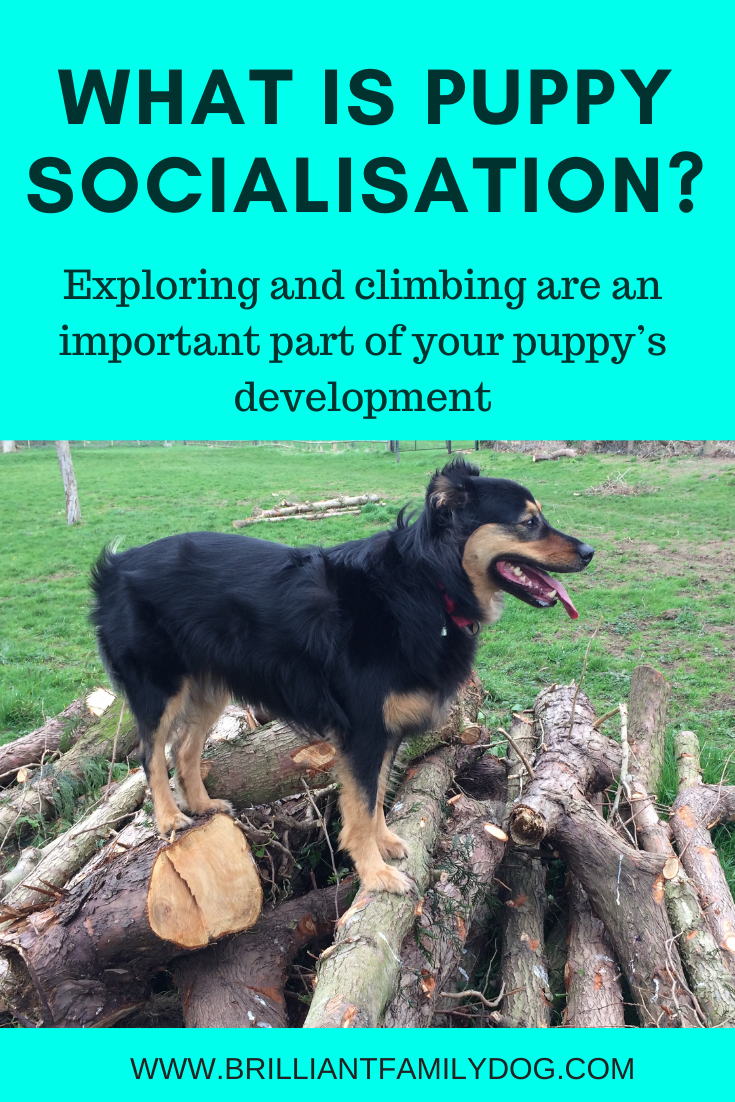I wrote recently about all the new dog-owners who grabbed the opportunity of working from home and got themselves a puppy in this post, and I’m revisiting it because of all the questions I’m getting about it.
People are often confused about “socialisation”, and now they’re more confused than ever!
Get your free guide to teach and learn just how to socialise your puppy
THIS FREE GUIDE IS A BONUS FOR YOU WHEN YOU SIGN UP TO RECEIVE EDUCATIONAL EMAILS AND OCCASIONAL OFFERS FROM ME. YOU CAN UNSUBSCRIBE AT ANY TIME.
Privacy Policy
Privacy Policy
Socialisation is NOT shoving your puppy in the face of every dog you see!
Socialisation is NOT a question of packing as many strange new things into one outing as possible.
And Socialisation is definitely NOT only about dogs!
Socialisation
Socialisation - to give it its full handle: Socialisation, Familiarisation, and Habituation - is about getting our new dog or puppy used to our world.
Getting your new puppy out into the world - to experience lorries, shouting, rain - as soon as you can, is vital. Don’t wait for injections to be done - that’s way too late! You can carry him for “arm-walks” as one of my students calls them. If your pup is too heavy for you to carry, you can borrow a push-chair, or you can park your car somewhere and sit in the boot with him beside you, watching the world go by.
Socialisation includes other dogs, sure - but it also includes lots of things people don’t tend to think about . . . until there’s a problem.
Vacuum cleaner, dropped saucepans, tv images, children, babies screaming, electronic sounds, snow, sand, wobbly planks, stairs, grooming, nail-trimming, food-toys - all these are essential parts of what your puppy has to get used to.
Separation Anxiety
And another important part of socialisation is teaching him to be on his own. It’s understandable that the enthusiastic new puppy-owner wants to spend every moment with her new charge. But this is not helping the puppy!
Just like humans, dogs need to learn to enjoy their own company. Safely! So an important part of this is to have a safe place (a crate is ideal) where you can leave your pup without worrying he’s going to chew an electric wire and kill himself, or pee all over the carpet.
Start with short absences from the room when the dog is awake. Don’t make a song and dance when you return - keep it cool and matter-of-fact. Your new puppy will be sleeping in his crate more than anything else, so it’s easy to introduce these brief exits from his space.
These short absences will demonstrate to your puppy that you will always come back. If you time them carefully when he’s been fed, watered, played with, and wee-ed, he’ll be ready for another nap anyway.
A bit of complaining is natural. What is termed Separation Anxiety is when the dog becomes desperate, ripping doorframes, losing bowel control . . . Don’t confuse this with your puppy saying, “Hoi! Get me outa here!”
Having a routine is very helpful for your new dog to understand what’s going on. That doesn’t mean rigidly sticking to clock times. It means having sequences so that each thing predicts the next step. The last step will be into bed, and you leaving.
Nighttime routine
Oh, and to begin with, I always have a new puppy sleeping in his crate right beside my bed. You can forestall any fears by being there when your pup stirs in the night. A few soothing sounds and a touch from you will send him straight back to sleep again.
If you want, you can transfer your dog and bed to another space once you have regular blissfully quiet nights!
Full-blown separation anxiety is not that common, in my experience. And it can easily be avoided by taking these early steps to give your dog confidence in you.















